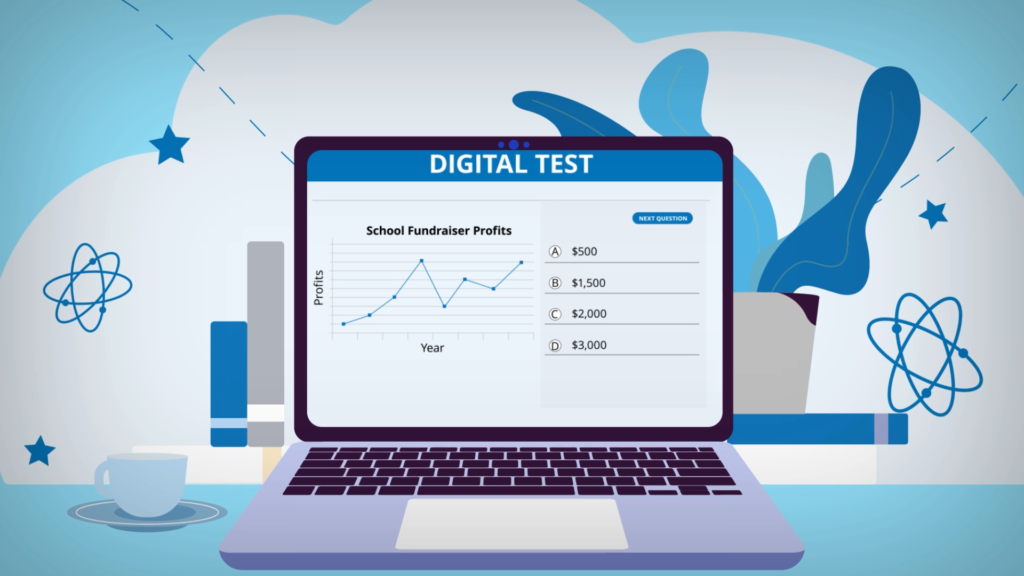 Students in grades 10 and 11 are eligible to sign up with their high school to take the in-school PSAT that is administered in October. Check with your school to find out on which of these two dates they will administer the test, who is eligible to take the test, and make sure a test is ordered for you if your school says you are eligible to be part of the cohort taking the test.
Students in grades 10 and 11 are eligible to sign up with their high school to take the in-school PSAT that is administered in October. Check with your school to find out on which of these two dates they will administer the test, who is eligible to take the test, and make sure a test is ordered for you if your school says you are eligible to be part of the cohort taking the test.
PSAT Facts:
The PSAT, a.k.a Preliminary SAT, is a standardized test designed by the College Board and the National Merit Scholarship Corporation. In the U.S., PSAT scores are used to determine eligibility for scholarships.
- The PSAT is used as a practice for the SAT, providing you with a baseline score,
- The PSAT is sometimes useful as part of your application to selective summer programs,
- The PSAT can get you on the mailing list for many U.S. colleges and universities,
- Some Canadian high schools require the test and use the PSAT for internal placement purposes.
The digital PSAT is 2 hours and 14 minutes long with 98 total questions. There are two sections: (1) Reading and Writing and (2) Math. Each section is divided into two modules of equal length. Note: The format of the digital PSAT is identical to that of the digital SAT.
The test starts with Module 1 of the Reading and Writing Section. Students have 32 minutes to answer 27 questions. During this time, students can skip ahead or go back to any question within Module 1, but they are not allowed to move on to Module 2 until the 32 minutes are up.
Immediately after finishing Module 1, students move into Reading and Writing Module 2. They have another 32 minutes to answer 27 more questions. Again, they can move around to any question in Module 2 during the allotted time, but they can’t go back to Module 1 or move ahead to the Math section. After Reading and Writing Module 2 is over, there is a 10-minute break.
After the break, students start Module 1 of the Math section, where they have 35 minutes to answer 22 questions. As in the Reading and Writing Section, students can skip ahead and revisit questions within the current module. Once the 35 minutes have passed, students move on to Math Module 2, where they have 35 more minutes to answer the final 22 questions.
Technology
The digital PSAT is taken on a computer or tablet within the Bluebook App, which is College Board’s digital testing application.
Students can use a variety of devices for the digital PSAT, including laptops, iPads, and school-managed Chromebooks. Please refer to College Board’s website for the most up-to-date list of approved devices and system requirements. Bluebook should be installed and up to date before test day. You can download the application on College Board’s website.
The Bluebook App has a built-in graphing calculator, but students may also bring their own approved calculator to use during the Math section. Please refer to College Board’s website for a list of approved calculators for the digital PSAT.
Test-Day Logistics
The PSAT/NMSQT is taken at school. Students should speak with their counselor about registration. Homeschooled students who wish to take the test should reach out to participating local schools as soon as possible to request a seat.
Schools can choose to offer the PSAT on any school day within the testing window, which is October 2-31, 2023 this year. Schools also have the option of administering the test on Saturday, October 14, 2023. While schools can test different groups of students on different days, students may only take the PSAT once during the testing window.
Schools should ensure that their testing rooms have a strong internet connection, outlets or power strips (though students do need to bring devices that can hold a charge), and proper seating. Rooms should be quiet with good lighting and ventilation and have a clock that’s visible to all students as well as a place to write or display Wi-Fi login information. Schools should refer to College Board’s guidelines for testing rooms and seating arrangements.
Unless the school is supplying computers, students should bring a fully-charged computer or tablet with the Bluebook application already installed, as well as a charger. Scratch paper will be supplied by the school, but students should bring their own pens or pencils. Students may also bring an approved calculator, an external mouse, a watch without an alarm, and a snack for the break. Students who are taking the test on a tablet can also bring an external keyboard.
